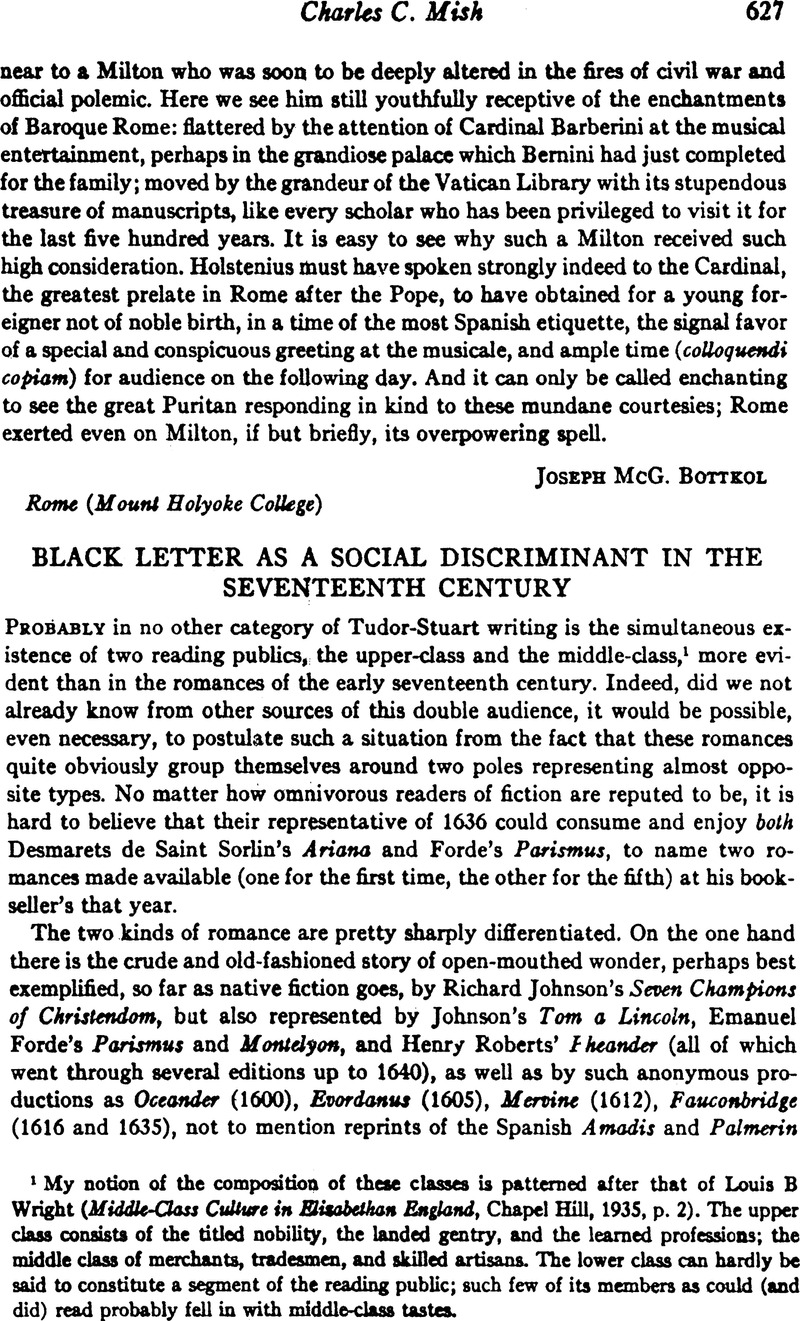Article contents
Black Letter as a Social Discriminant in the Seventeenth Century
Published online by Cambridge University Press: 24 March 2021
Abstract

- Type
- Notes, Documents, and Critical Comment
- Information
- Copyright
- Copyright © Modern Language Association of America, 1953
References
page 627 note 1 My notion of the composition of these classes is patterned after that of Louis B Wright (Middle-Class Culture in Elisabethan England, Chapel Hill, 1935, p. 2). The upper clsss consists of the titled nobility, the landed gentry, and the learned profession; the middle class of merchants, tradesmen, and skilled artisans. The lower clsss can hardly be said to constitute a segment of the reading public; such few of its members as could (and did) read probably fell in with middle-class tastes.
page 628 note 2 E. P. Goldschmidt, The Printed Book of the Renaissance (Cambridge, 1950), p. 25, comments on this point: “It would seem that none of the bibliographers ever laid down an opinion on the precise period when the invariable practice of printing English vernacular texts in black-letter can be said to have changed ...” It may be worth pointing out too that Goktschmidt's first chapter is devoted to showing that fa Renaissance Europe roman and black-letter types had different social and intellectual functions, “catering to differing markets, for books differing fa content, for customers of divergent tastes” (p. 10).
page 629 note 3 These lata 17th-century reprints are not real chapbooks, a somewhat loosely used term which, as it seems to me, should designate only pamphlets of duodecimo or smaller size containing not many more than 24 pages. It nay ha said that chapbooks in this sense are almost exclusively—at least fa fiction—an 18th-century phenomenon, and hence they do not come into consideration here. They are, Incidentally, normally in roman type, though of course the dreadfully Indifferent presswork continues.
- 26
- Cited by




